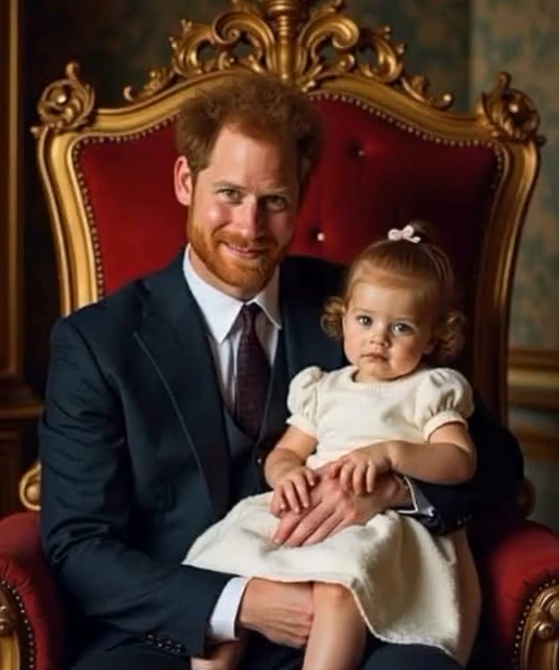Prince Harry made headlines this week as he returned to Buckingham Palace, a visit that stirred emotions both in the public eye and within the royal family itself. His return, though brief, symbolized a connection to the place where so many formative moments of his life unfolded.
The visit was framed as deeply personal, centered around his relationship with his daughter, Lilibet. Harry, who has been vocal about protecting her from the pressures of royal life, seemed to bring a message of belonging and reassurance with him.
Sources close to the family described the moment as intimate and heartfelt. The palace halls, often echoing with ceremonial pomp, were temporarily filled with a private family energy that was rarely seen by the public.
This return has been interpreted by many as a bridging of two worlds: Harry’s independent life in the U.S. and the legacy of the British monarchy. It highlighted the delicate balance he tries to maintain between personal freedom and family tradition.
For Lilibet, this visit might have been her first real experience of the grandeur of her heritage. Prince Harry reportedly took time to show her the palace’s historic rooms, sharing stories that combined history with personal memories of his own childhood.
Observers noted the tenderness in Harry’s demeanor, as he walked through the corridors with a watchful eye on his daughter. Every gesture seemed deliberate, aiming to instill both awe and a sense of comfort.
While public scrutiny often shadows members of the royal family, this event remained largely private, emphasizing Harry’s intention to protect his daughter from media attention. Photographs were minimal, and no press was invited to witness the personal moments.
The palace itself has a rich tapestry of history, which Harry reportedly shared with Lilibet. He pointed out portraits of past monarchs, recounted tales of his own upbringing, and even hinted at lessons learned through personal triumphs and mistakes.
Experts on royal affairs suggest that visits like these are both symbolic and therapeutic. They reinforce family bonds, create lasting memories, and subtly signal that despite past disagreements, the ties of blood remain strong.
Harry’s choice to return to the palace also sends a message to the wider public. It highlights the ongoing negotiation between his role as a father and his complex relationship with the monarchy, reflecting the human side behind public personas.
Insiders mentioned that the visit included quiet moments of reflection. Harry reportedly lingered in familiar spaces, recalling childhood experiences while considering the future he hopes to build for Lilibet, free from the burdens he endured.
The media coverage of the visit has been mixed, with some praising the emotional significance and others critiquing the timing. Nonetheless, the narrative remains focused on family, belonging, and legacy.
For those who follow the royal family closely, Harry’s visit underscores a recurring theme: the desire to maintain connection without compromising personal values. This balance has defined much of his public life since stepping back from official duties.
Royal historians emphasize the importance of such moments. They argue that children who grow up amidst historical legacy benefit from firsthand experience of their heritage, fostering identity and resilience.
Lilibet’s presence at the palace also raises conversations about the future of the monarchy. Even brief visits by younger generations contribute to the continuity and public perception of royal traditions, subtly shaping narratives for years to come.
The relationship between Harry and his daughter appears central to this visit. He reportedly encouraged curiosity, asked questions, and shared anecdotes designed to connect the past with the present in ways that a child could understand and cherish.
Observers describe Harry’s approach as thoughtful and intentional. Unlike previous public appearances that often drew media frenzy, this visit prioritized quiet, meaningful interaction over spectacle.
While the exact details of the visit remain private, it is evident that Harry aimed to provide Lilibet with a sense of identity and history, helping her understand that the palace, despite its grandeur, is also a space of family and belonging.
In many ways, this moment serves as a reminder that royal life is not solely about public appearances or duty. It is also about personal connections, shared memories, and the nurturing of future generations.
As Harry departed the palace, insiders noted a serene sense of closure and hope. The visit marked not just a return to a physical space but a reconnection with lineage, love, and the enduring ties that define family across generations.
